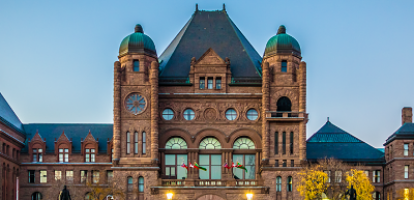From: Rosalie Wyonch
To: Canadian drug regulators
Date: July 8, 2019
Subject: Canada Selling Drugs to the US: Be Careful of the Price Trap
There is one issue that unites polarized politicians in the United States: drug prices.
Both Bernie Sanders and Donald Trump have said they support importing lower-priced drugs from Canada as an easy solution to high drug prices in the US. Most recently, Florida passed a bill that would allow the state to contract with wholesalers in Canada to provide certain high-cost drugs to wholesalers in Florida if it receives federal approval.
The pressure of increasing drug expenditures on government budgets has made controlling drug prices a priority for governments on both sides of the border, but Americans pay the highest prices in the world for their medication. As of June 5, 47 states had filed a total of 262 bills to control prescription drug prices. Thirty of those relate to importation. A combined 166 of the bills feature regulations and rules for pharmacy benefit managers and drug price transparency.
Currently, maximum prices for patented pharmaceuticals in Canada are determined by benchmarking to prices of drugs in the same therapeutic category (internal reference pricing) or to the price of the same drug in select other countries, including the US (external reference pricing.)
External reference pricing is not used to control prices in the US, but it is one of the many policies currently being proposed and debated. Medicare and Medicaid, the two government programs through which most elderly Americans and those with low incomes have pharmaceutical coverage, do include use of internal reference pricing.
Though lower than in the US, published prices of patented pharmaceuticals in Canada are comparable to or higher than in most other developed nations, as are our contributions to business R&D through direct funding and tax expenditures.
Even so, the gap between Canadian and US prices is large: Americans, on average, pay prices more than three times higher than Canadians for patented medicines and the gap is widening. Insulin purchased in Canada costs about one-tenth of the price in the US, for example.
The size of the US market relative to Canada’s means that any policy changes south of the border could have significant effects on the availability and price of pharmaceuticals in Canada. Among OECD countries, the US market accounts for nearly half (46 percent) of all brand name drug sales and 70 percent of patented pharmaceutical profits, despite the US accounting for only 34 percent of the OECD’s combined GDP. Pharmaceutical sales in Canada account for about 2 percent of the global market.
There is a real possibility of short-term shortages: if just 10 percent of US prescriptions were filled from Canadian sources, Canada’s drug supply would be exhausted in less than a year. In the longer term, the Canadian drug manufacturing industry would likely expand to meet the increased demand, reducing the risk of domestic shortages.
This expansion would be helped along by ongoing government investment in the health and biosciences sector. The federal government has set a target of doubling the size of the sector by 2025 with an export target of $26 billion annually (in 2018, pharmaceutical exports from Canada totaled $11 billion with more than two thirds heading to the US.)
The bigger risk to Canada is that US policy changes could result in higher prices in Canada or delayed access to new medications.
Specifically, price regulation by external referencing, whereby high-price countries reference low-price countries, has indirect or spillover effects that contribute to launch delay and higher launch prices in low-price referenced countries.
If the US regulates prices directly through the use of reference pricing or indirectly benchmarks prices to Canada by allowing importation, it would create an incentive for pharmaceutical firms to seek higher prices when launching a new drug in Canada or delaying launch altogether to protect against a subsequent reduction in prices and loss of profits in the much larger US market.
As a result, Canadians would likely get access to new medicines more slowly and pay higher prices for them once they are accessible.
US drug pricing policy is out of our control, but could have significant consequences. Canada should prepare to respond to US policy changes and should be cautious when pushing for further domestic price reductions because of the potential for the unintended consequence of delaying access to new medicines and treatments.
Rosalie Wyonch is a Policy Analyst at the C.D. Howe Institute.
To send a comment or leave feedback, email us at blog@cdhowe.org.
The views expressed here are those of the author. The C.D. Howe Institute does not take corporate positions on policy matters





